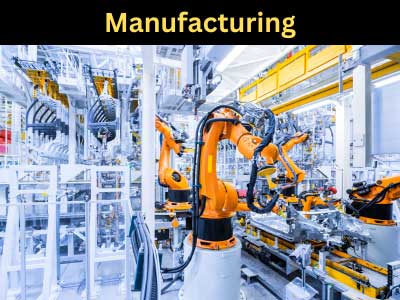Key Takeaway
Manufacturing costs can be reduced through several strategies. One effective method is implementing lean manufacturing principles, which focus on minimizing waste and maximizing efficiency. This involves streamlining processes, improving workflow, and using resources more effectively. Standardizing parts and adopting build-to-order practices also help reduce costs by minimizing excess inventory and production time.
Another approach is to optimize the supply chain. Negotiating better terms with suppliers, reducing transportation costs, and using local materials can lead to significant savings. Additionally, investing in automation and advanced technologies can improve productivity and reduce labor costs. By adopting these strategies, businesses can achieve substantial cost reductions while maintaining or improving product quality.
Identifying Cost Drivers in Manufacturing
Every manufacturer faces cost drivers that vary depending on the product, industry, and process. These include labor, materials, energy consumption, and transportation costs. The first step in reducing manufacturing costs is understanding what factors contribute the most to your overall expenses. Through careful analysis, businesses can identify patterns and trends that point to inefficiencies.
By addressing these cost drivers, manufacturers can focus on the areas where the most significant savings can be made. Whether it’s optimizing labor, renegotiating material costs, or improving equipment maintenance schedules, understanding your cost structure is critical for making targeted improvements.

Optimizing Energy Consumption to Lower Costs
Energy consumption is a significant cost in manufacturing, especially in industries that rely on large machinery and 24/7 operations. Optimizing energy use not only reduces costs but also aligns with sustainability goals, which are increasingly important in today’s market. By conducting an energy audit, manufacturers can identify wasteful energy practices and implement solutions such as energy-efficient machinery or smart energy management systems.
One common solution is to invest in renewable energy sources like solar panels or wind turbines. Although the upfront costs can be high, the long-term savings in energy expenses are substantial. Additionally, implementing automated systems to control heating, cooling, and lighting can further optimize energy use, cutting down on unnecessary consumption during non-operational hours.
Energy-efficient equipment and practices not only cut costs but also contribute to a greener production process, which can enhance brand reputation and marketability.
Reducing Material Waste and Scrap Rates
Material waste is another significant cost driver in manufacturing, and reducing it can lead to both financial and environmental benefits. Scrap rates often result from inefficiencies in production, design flaws, or poor-quality materials. Streamlining the manufacturing process by utilizing precision machinery and better raw material handling can reduce waste considerably.
One effective approach to reducing material waste is adopting just-in-time (JIT) manufacturing. JIT focuses on producing only what is necessary, minimizing excess inventory and the associated costs. Additionally, recycling and reusing materials where possible not only lowers waste but can also provide secondary revenue streams.
By enhancing quality control and monitoring production closely, manufacturers can identify and correct errors before they result in wasted materials. Reducing waste not only saves money but also contributes to a more sustainable operation, which is an increasing focus for many businesses today.
Lean Manufacturing Principles for Cost Reduction
Lean manufacturing principles aim to eliminate waste in all forms—time, material, and labor. This philosophy focuses on improving efficiency while maintaining product quality, making it a cornerstone for cost reduction in many industries. Lean manufacturing relies on continuous improvement (Kaizen), where small, incremental changes are made to streamline processes and improve efficiency.
For example, adopting lean practices like value stream mapping can help manufacturers visualize their processes and identify areas of waste. Removing bottlenecks and improving workflows ensures that production runs smoothly without unnecessary delays, reducing labor costs and improving output.
Lean principles are not just about cutting costs; they also enhance the overall performance of the manufacturing process. When implemented correctly, lean manufacturing results in better resource allocation, higher productivity, and ultimately, lower production costs.
The Role of Automation in Reducing Labor Costs
Automation has become a vital tool in reducing labor costs, as it allows for more consistent, high-volume production with fewer human errors. Automated systems can perform repetitive tasks more efficiently and quickly than manual labor, leading to higher productivity and lower labor expenses. Automation also reduces the risk of injury in hazardous environments, contributing to a safer workplace.
For many manufacturers, automation means a significant investment in technology, but the long-term savings on labor make it worth the upfront cost. Robotic systems and conveyor belts are just some examples of automated solutions that streamline operations and reduce reliance on human labor for monotonous tasks.
The introduction of automation in manufacturing doesn’t mean eliminating jobs entirely; rather, it often shifts the workforce into more specialized roles, overseeing and managing automated systems. By reducing labor costs while increasing precision and efficiency, automation plays a critical role in long-term cost management for manufacturers.
Conclusion
Reducing manufacturing costs requires a multifaceted approach that involves optimizing energy use, reducing material waste, adopting lean principles, and integrating automation. By identifying and addressing the specific cost drivers, manufacturers can make targeted improvements that lead to significant long-term savings. These strategies not only reduce costs but also enhance efficiency, productivity, and sustainability, helping businesses stay competitive in an increasingly demanding market.
